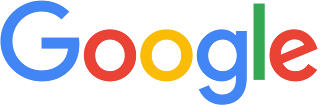Over the semester in Media, Law, and Literacy, we have been talking about our personal relationships with technology as well as society as a whole. The advancement of technology has been beneficial in many ways but also comes with some negatives. Technology can advance our knowledge for the good or mislead us with false information.
In an article from Columbia University, experts weigh in on the harm of technology, specifically social media. I was shocked to read that an investigation by the Wall Street Journal revealed that Facebook was aware of the mental health risks linked to the use of their Instagram app but kept those findings secret. Internal research shows that teen users on Instagram have worsened body image, and usage of the app is linked to anxiety and depression. It is alarming that teens are being influenced and affected by technology at such a young age. This makes me wonder how much other social media platforms are aware of and don't share. How scary is it that a social media app, a form of technology, has power over us to perceive ourselves differently and affect our mental health?
Middle school and high school are especially hard years to have technology in our hands with all the cyberbullying that takes place. Cyberbullying has made it difficult to track, respond to, and combat incidents of bullying. Cyberbullying has a link to depression, social anxiety, reduced self-esteem, and poor academic performance. Bullies can spread messages anonymously to large audiences quickly. Cyberbullying can occur 24/7, it is not limited to school hours.
 |
| Space Technology Predicted in the Futurama Display |
The video about the famous Futurama display at the World's Fair in New York was fascinating, especially seeing how much of the future it predicted is accurate. It's remarkable how ideas from 1964 have come to life today! This display made predictions about a man going to the moon, weather technology, electric cars, underwater hotels, and technology advances as a whole.
 |
| Picture from the remix by Moby |
The remix by Moby video shows how people in our society are glued to their phones and disconnected from reality. There is a scene where someone is being bullied and hit. Bystanders record the event instead of stepping in to help the situation. This helps to show the relationship our society has with technology. In the scene where a young girl appears to be happy, wearing makeup and presenting herself carefully. On the other hand, when the phone shifts to real life without social media, she is dull, sad, and looks withdrawn. This shows that what you see online is not always how it is in real life. Social media can pressure people into a false truth, which can mask our struggles.
With the creation of Artificial Intelligence, technology has transformed. AI is specifically being used in the workplace. This concept brings up fear in the future of the job industry. AI has brought the creation of recruiting tools and robotic assistants. Recruiting tools help employers go through cover letters and resumes. This makes me wonder if people's jobs are going to start being stripped away since AI systems allow for improved efficiency and productivity.
As I have mentioned above, technology has an impact on our society. I decided to dive deeper and found an article about the ways it is affecting our society. Technology is a major concern for future generations but also has many benefits. People today in our society are using technology so much, which reduces their physical activity and affects their health. If this is how our generation is living, it worries me how technology will affect future generations.
Positives of Technology include improved communication, easy-to-access information, and improved education. Negatives include increases in unemployment, an increase in health and mental concerns, and an increase in pollution. Technology seems like a give-and-take it has its positives but also its negatives. It is all about using the technology in the proper way that does not harm yourself or others.
Overall, technology has been part of my life since middle school and will be for the foreseeable future. I would like to say my relationship with technology is perfect, but it is far from it. I strive to put my phone down more to be more present in the moment.





















